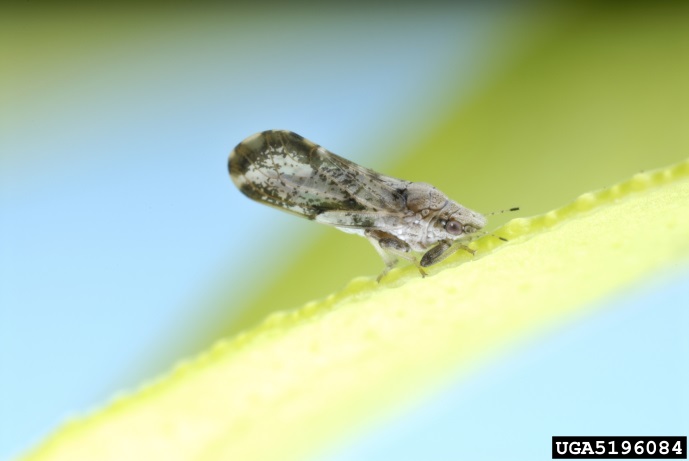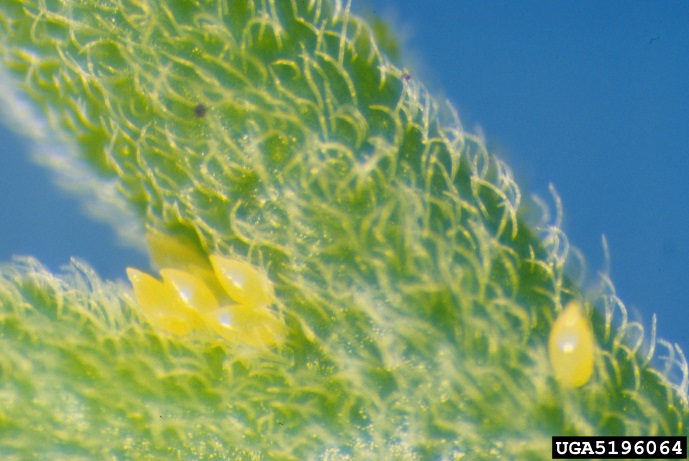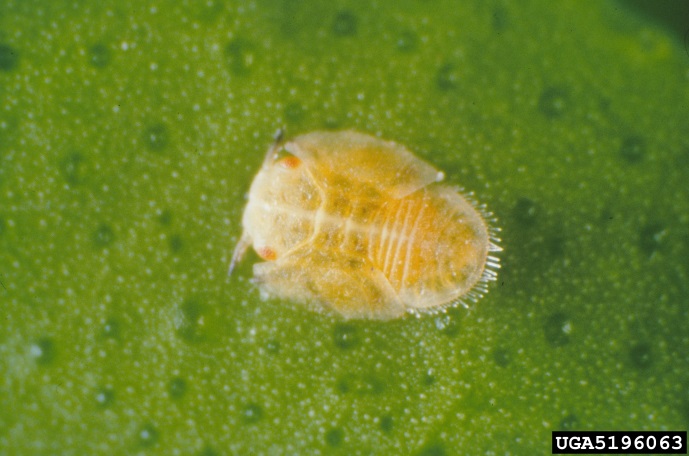
Asian Citrus Psyllid
| Primefact number | Edition | Published | Author |
|---|---|---|---|
| 1193 | Second | Apr 2017 | Plant Biosecurity and Product Integrity |



Asiatic citrus psyllid (also called Asian citrus psyllid) is a small sap sucking insect that resembles a tiny cicada.
Asiatic citrus psyllid is a known vector of “Candidatus Liberibacter asiaticus” which causes the disease huanglongbing.
Asiatic citrus psyllid (Diaphorina citri) is an exotic plant pest not present in Australia. This pest is a serious threat to Australia’s citrus industry.
Notifiable status
Asiatic citrus psyllid (Diaphorina citri) is a notifiable plant pest in NSW.
All notifiable plant pests and diseases must be reported within 1 working day. You can report notifiable plant pests and diseases by one of the following methods:
- Call the Exotic Plant Pest Hotline 1800 084 881
- Email biosecurity@dpi.nsw.gov.au with a clear photo and your contact details
- Complete an online form
A full list of notifiable plant pests and diseases can be found in Schedule 2 of the NSW Biosecurity Act 2015.
Damage
Psyllids extract large quantities of sap from plants as they feed and produce large amounts of honeydew. Honeydew coats the leaves and encourages sooty moulds to grow.
Asiatic citrus psyllids cause direct damage to plants by injecting a salivary toxin during feeding.
New shoot growth that is heavily infested is distorted. Leaves on the tip do not expand or develop normally and the tip is more susceptible to breakage. Distortion of new growth provides protected egg laying sites.
In addition to causing direct damage to the plant the Asiatic citrus psyllid vectors the citrus disease huanglongbing.
Lifecycle
A single lifecycle takes from 15 to 47 days depending on temperature and season. Adults can live for more than four weeks. There is no overwintering stage but populations are typically low in the winter or during dry periods.
Adults
Adult Asiatic citrus psyllids are 3-4 mm long with a mottled brown coloured body and light brown head. Wings are mottled and broadest in the apical half, with a dark brown band extending around the edge of the outer half of the wing (Figure 1). The abdomen of the female turns a bright yellow-orange when she is ready to lay eggs.
Eggs
Eggs are laid on the tips of growing shoots and between new leaves. Females lay 300 to 800 eggs during their lifetime.
Eggs are approximately 0.3mm long, elongated and almond-shaped (Figure 2). Fresh eggs are pale in colour. They turn yellow and then orange before hatching.
Nymphs
Nymphs are less than 2 mm in long. Nymphs look similar at each instar but increase in size after each moult. They are generally yellowish-orange in colour (Figure 3).
Behaviour
Asiatic citrus psyllid adults usually feed on the underside of leaves. Adults will jump a short distance when disturbed.
Adult psyllids have a distinctive feeding posture. They feed with their heads and wing tips pointing upwards. Their bodies form an angle of 45 degrees with the leaf surface.
Nymphs move in a slow, steady manner and flick their abdomens upwards when disturbed.
Nymphs require young tender growth to survive.
Host range
The known host range of Asiatic citrus psyllid includes 25 genera in the Rutaceae family.
Preferred hosts are Citrus, Citropisi, Bergera koenigii (curry leaf) and Murraya (mock orange or orange jasmine).
All citrus cultivars are hosts of the Asiatic citrus psyllid.
World distribution
Asiatic citrus psyllid is found in tropical and subtropical Asia including Australia’s northern neighbours Indonesia, East Timor and Papua New Guinea. It has spread to North, South and Central America and parts of Africa.
Australia is currently free from Asiatic citrus psyllid and huanglongbing.
Spread and movement
Long distance spread of Asiatic citrus psyllid occurs through the movement of infested citrus plants or plant parts.
Tropical storms and cyclones may enable long distance spread of adult psyllids.
Actions to minimise risks
Put in place biosecurity best practice actions to prevent entry, establishment and spread of pests and disease:
- practice “Come clean, Go clean”
- ensure all staff and visitors are instructed in and adhere to your business management hygiene requirements
- source propagation material of a known high health status from reputable suppliers
- keep records

